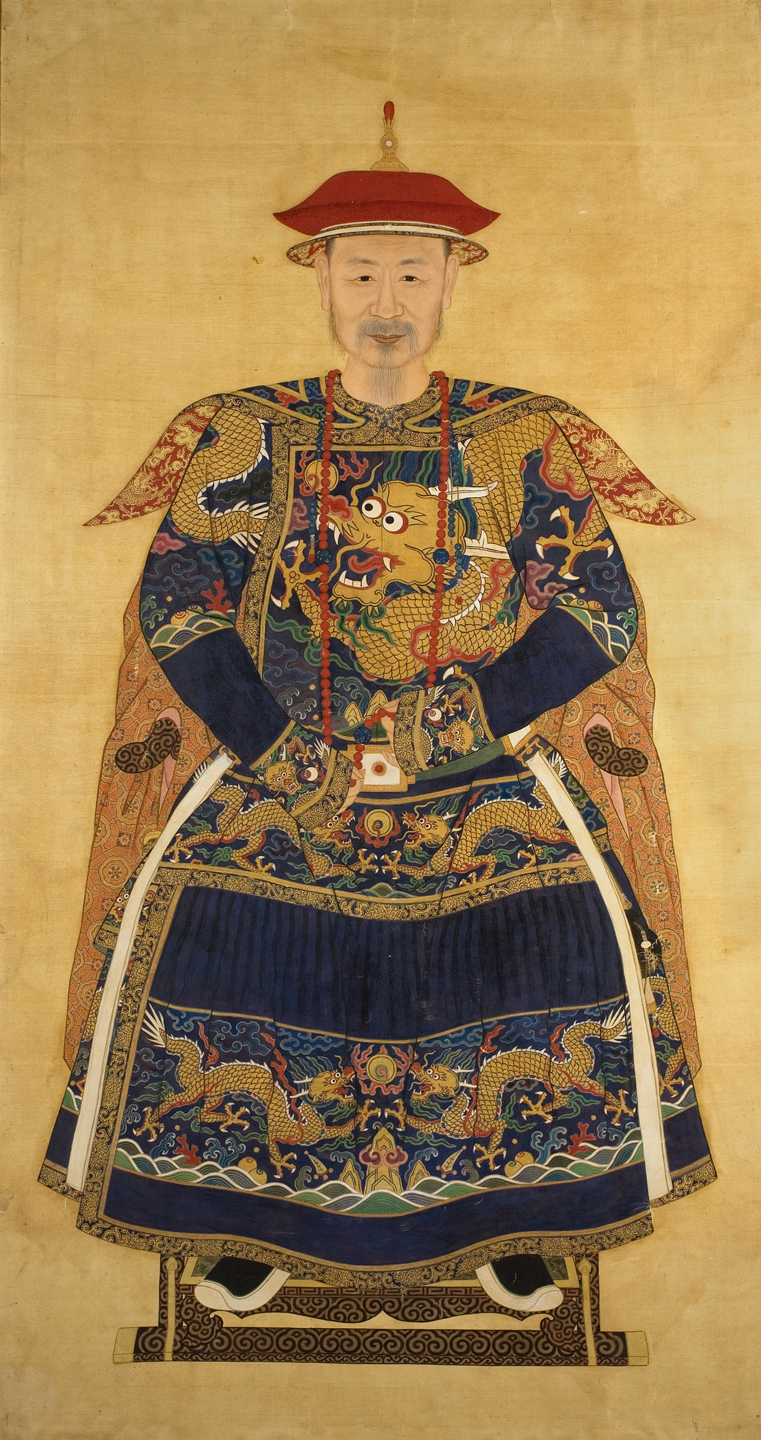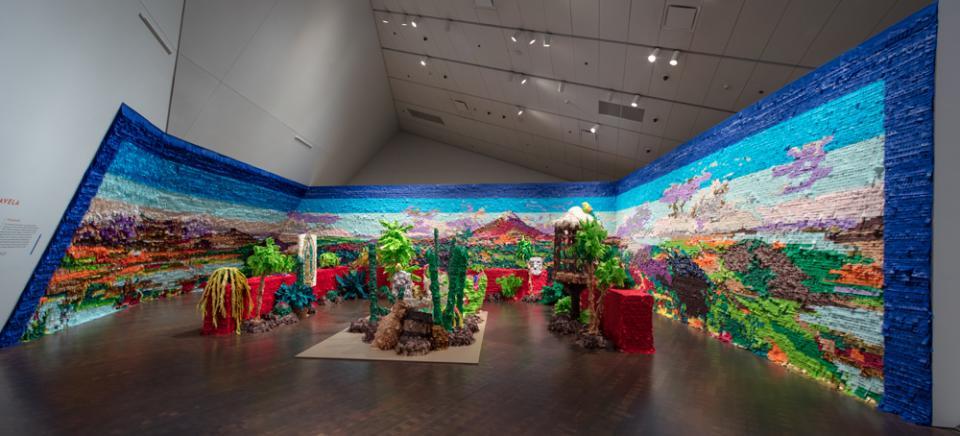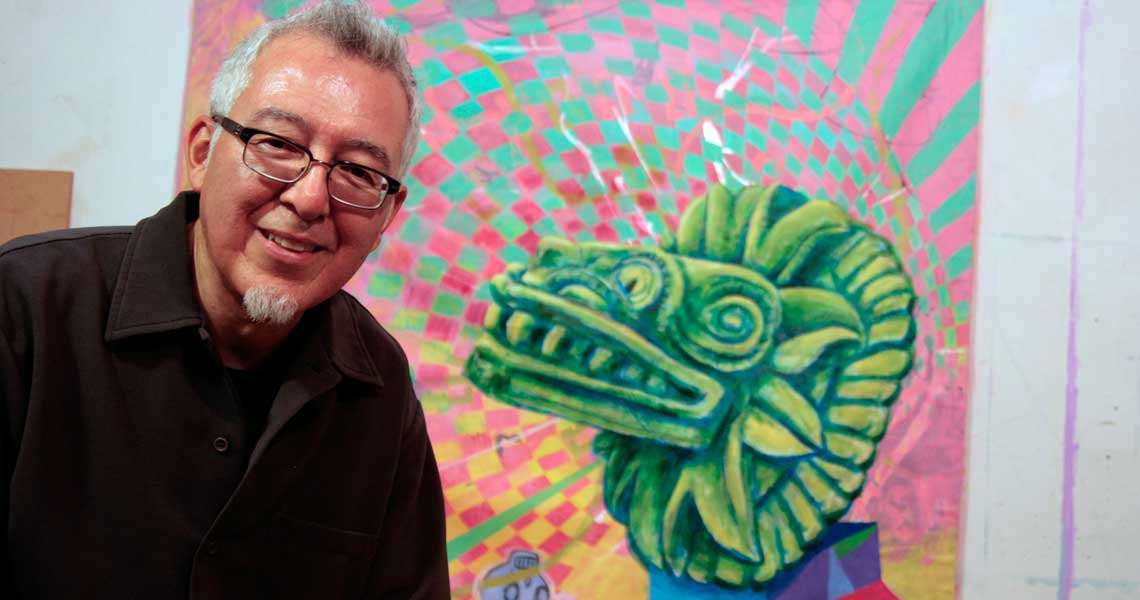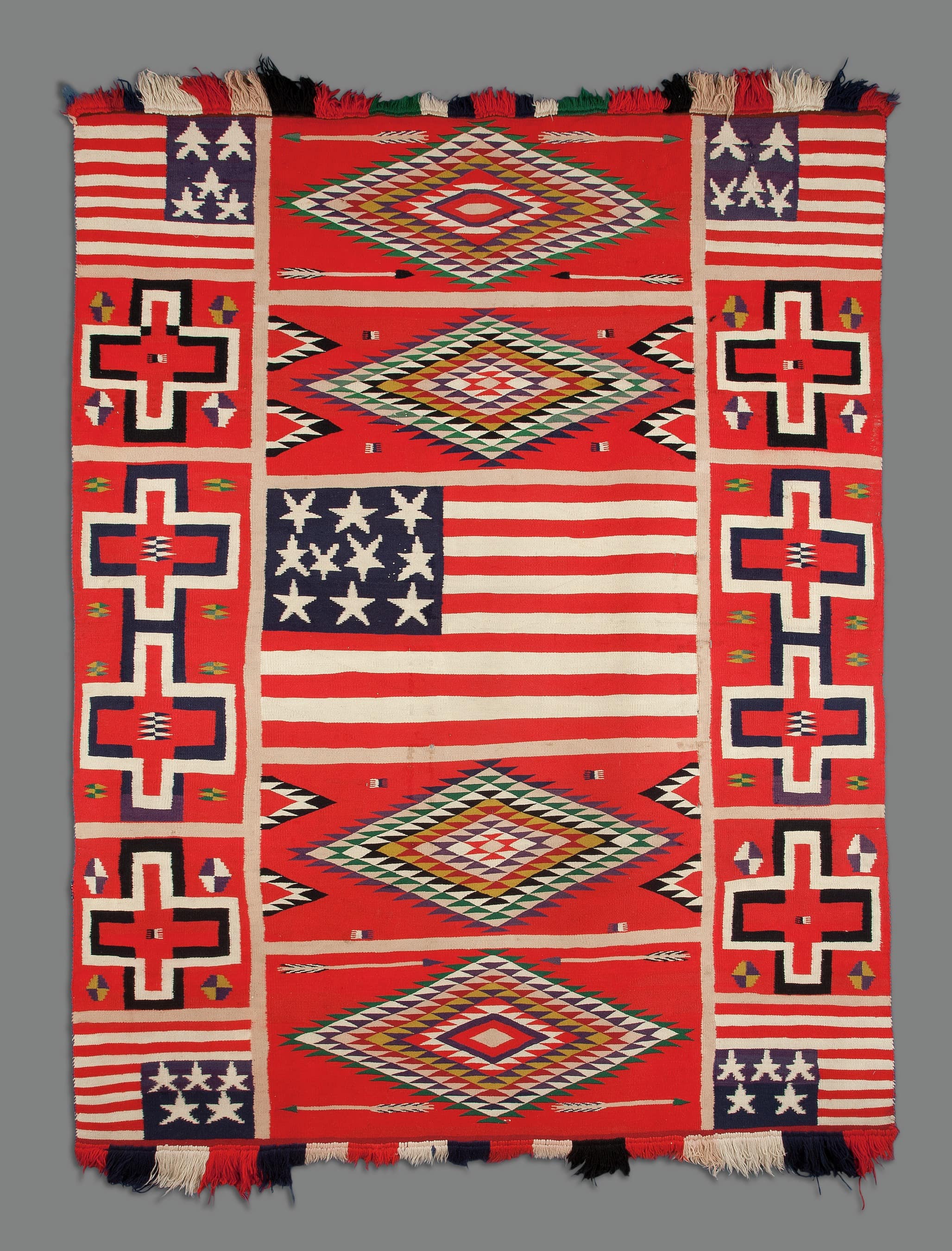Students will explore the artistic characteristics and function of the Maya Vessel with Palace Scene, then create their own personal drinking vessel using Styrofoam cups and an assortment of artistic materials!
Students will be able to:
- describe the artistic characteristics of the Maya Vessel with Palace Scene;
- explain the purpose and function of this Maya drinking vessel; and
- create their own personal drinking vessel using Styrofoam cups and a variety of artistic materials.
Lesson
- Display theVessel with Palace Scene. What do the children notice? What colors do they see? How would they describe the shape of this piece of art? What are the figures on the vessel doing? How do the children think the vessel was used?
- Discuss the purpose and use of the Vessel with Palace Scene. Using kid-friendly language and the About the Art section, share with the children that the illustrations on the vessel show a marriage negotiation and that this vessel was used for drinking cacao.
- Ask the children: Have any of you ever enjoyed hot chocolate? Explain briefly how chocolate is made from the cacao bean. Three bags of cacao beans can be seen on this drinking vessel.
- Ask the children: What is your favorite beverage to drink (e.g. orange juice, milk)? If you could design a cup or glass to drink your favorite beverage from, what would it look like? Why would you design it like that?
- Provide the children with Styrofoam cups and a variety of artistic materials (colored markers, stickers, glitter, and so on). Then invite them to create their own drinking vessel!
- Be sure to display the children’s artwork in a prominent place in the classroom. Once the cups are ready to be used (e.g. any paint or glue has dried), consider filling the children’s cups with juice or water and having a small celebration!
Materials
- One Styrofoam cup per child
- Assorted artistic materials including colored markers, stickers, glitter, and glue
- About the Art section on Maya Vessel with Palace Scene
- One color copy of the vase for every four students, or the ability to project the image onto a wall or screen
Standards
- Visual Arts
- Invent and Discover to Create
- Observe and Learn to Comprehend
- Relate and Connect to Transfer
- Language Arts
- Critical Thinking & Reasoning
- Information Literacy
- Invention
- Self-Direction
Cylinder Vessel with Image of Seated Lord and Attendants at Court
We don’t know the name of the artist who made this vessel, but it’s apparent that they were very skilled. The artist was able to give the human figures depicted on the vessel depth and substance, conveying individual personalities and even humor. A hieroglyphic text encircles the top of the vessel and occurs within the painted scene. It took great skill to paint both the figures and hieroglyphs with such control.
The glyphic text indicates that this vessel was probably made in what is now Guatemala. Vessels like this were made from local clays and other materials that were added for strength. Before firing the vessel, the artist covered it with a white or orange slip, a mixture of clay and water, to serve as background color. The artist then painted images and designs onto the polished surface with mineral-pigmented slips. The last step was to fire the vessel in an open pit.
The inscription on this vessel tells us it was crafted for the father of the central, seated lord and was used for drinking cacao or chocolate. Painted on the thin-walled cylindrical vessel is a scene of palace life that involves a tribute payment to the lord. Goods on display include two circular fans woven of reed or palm leaf, several stacks of textiles, and three large bags of cacao or chocolate beans. Cacao beans were a gourmet food item and could also be used as a form of money. While the assembled men participate openly in the event, two women (seated on the right) are shielded from public view. Probably members of the noble household, they appear to listen to the discussion with interest.
Life in noble Maya courts was both luxurious and sophisticated. Maya cities incorporated elaborate stone and stucco architecture, carved ruler portraits on free-standing stone slabs, and painted large-scale mural scenes. Elegant, multi-colored painted ceramics were owned and used by the elite.
Details
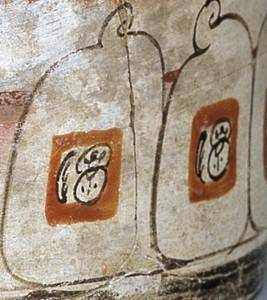
Bags of Cacao Beans
The Maya used cacao as the basis for chocolate drinks and as a form of currency. Three bags of cacao beans are depicted on the step below the principle lord and the youths, probably sons, who sit next to him.
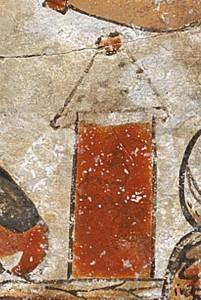
Cacao Vessel
Directly in front of the principle lord is a tall cylindrical vessel, most likely filled with a chocolate beverage.
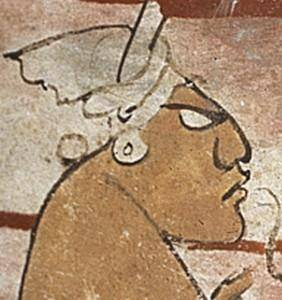
Sloping Forehead
A sloping forehead and elongated head shape were signs of beauty among the Maya elite. Sometimes, an infant’s still soft head was bound between boards to achieve the desired head shape, emphasizing a smooth unbroken line between the nose and the forehead.
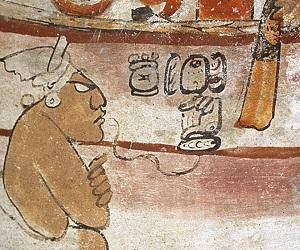
Pink Wash
A delicate pink wash shades the inscriptions and the scene. The colored wash provides the vessel with a distinct look.

Setting
The artist has arranged the ten figures in an interior space that features a two-level platform, curtains, and woven mats.
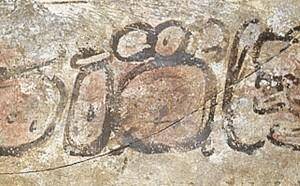
Hieroglyphs
The painted inscription records the name of the large central figure, who is the ruler of the court (Nabnal K’inich Lakam). It also names his father (Yuknoom K’awiil), from the site of Rio Azul in present-day Guatemala. The inscription also identifies the vessel as a drinking vessel for cacao or chocolate.
Funding for object education resources provided by a grant from the Morgridge Family Foundation. Additional funding provided by the William Randolph Hearst Endowment for Education Programs, and Xcel Energy Foundation. We thank our colleagues at the University of Denver Morgridge College of Education.
The images on this page are intended for classroom use only and may not be reproduced for other reasons without the permission of the Denver Art Museum. This object may not currently be on display at the museum.

